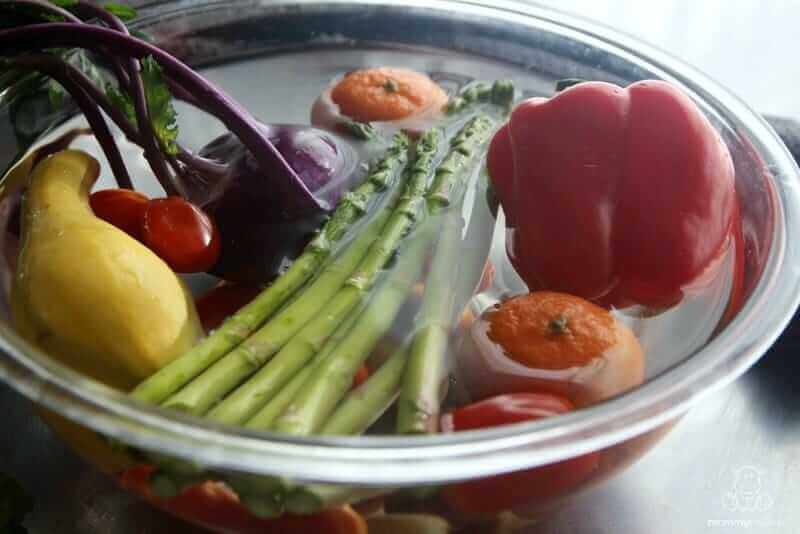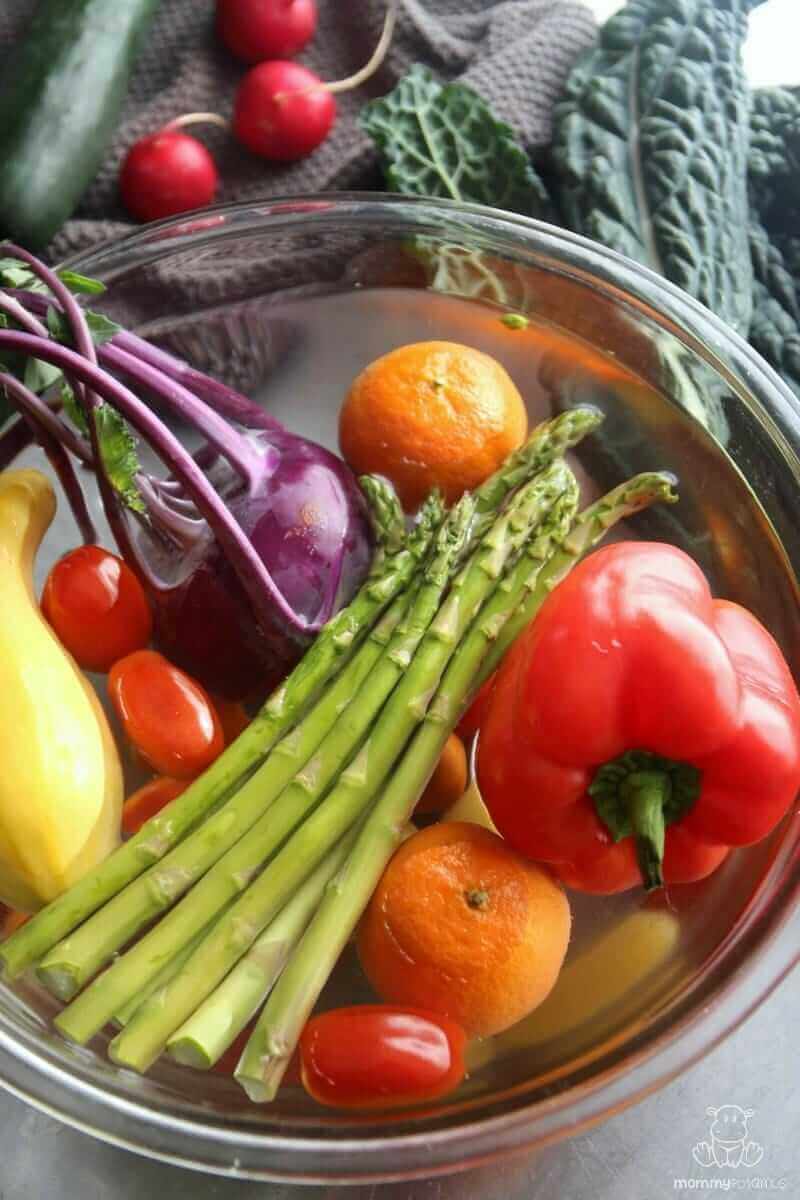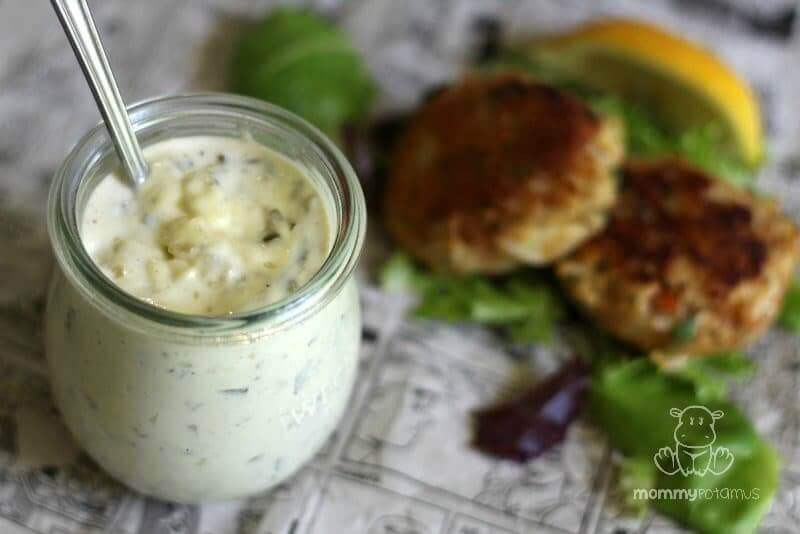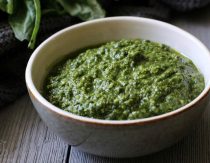
Despite what lawmakers say, pizza sauce is not a vegetable. For starters, tomatoes are fruits.:)
Now, there have definitely been times when I’ve put egg drop soup on the table with pickles (also a fruit!) because it’s all I could pull together, but I try to include veggies as much as possible – creamy kale salad with lemon, spaghetti squash alfredo, Mexican-style chopped salad, coleslaw, sauteed cactus buds. Okay, not that last one.
The point is, we’re big fans of fresh produce over here. But pesticide residue? Not so much. Although we avoid the dirty dozen and buy organic whenever possible, there is still the possibility of some residue due to pesticide drift from other fields.
That’s why over the years I’ve tried to keep tabs on the best research-backed ways to clean produce. Here are the top two natural ingredients you will find mentioned in DIY Veggie Wash recipes, which have both been found to work as well – or even better – than the veggies washes sold in stores: (NPR)
Vinegar
One study done by Cook’s Illustrated found that a vinegar solution (one part vinegar, three parts water) outperformed plain water, antibacterial soap, and manual scrubbing in cleaning ability. For example, vinegar removed 98 percent of bacteria compared with just 85 percent removed by rinsing with water and using a vegetable scrubber. (NPR)
It’s unclear how effectively diluted vinegar removes pesticide residue, but one study did find that soaking potatoes in 5% acetic acid (pure vinegar) for 10 minutes removed up to 100% of certain pesticides. (Bajwa et. al.) That’s a lot of vinegar to go through on a weekly basis, though, which brings me to our next ingredient . . .
Baking Soda
According to researchers at the University of Massachusetts, soaking apples in water mixed with baking soda for 12-15 minutes almost completely removed two common pesticides from the surface of the apples. (He et. al.) Another study using cucumbers found similar results. (Liang et. al.) This method requires a only a teaspoon or two of baking per batch, which is pretty cost effective.
So, can I combine the two?
Unfortunately, no. Vinegar is an acid while baking soda is a base, so if you mix the two together they will neutralize each other.
In the next section I’ll share several ways I use them in my kitchen. Whichever one you go with, keep in mind that many fruits and vegetables are now covered in wax, which can seal pesticide residue and bacteria underneath the surface. In order to really clean produce, combine the cleaning power of the recipes below with a good scrubbing using a produce brush.

3 DIY Fruit And Vegetable Wash Recipes (Soak Method)
Recipe #1 With Baking Soda (Soak Method) – Add 2 teaspoon to 4 cups of water and soak produce for 2-15 minutes. The longer the veggies and fruit soak, the more pesticide residue is removed. Scrub with a produce brush for extra cleaning power if you have one, then rinse.
Recipe #2 With Vinegar (Soak Method) – The studies done on vinegar have used different ratios, usually 1:10 (one part vinegar to 10 parts water) or 1:3 (one part vinegar to three parts water). How much you use is up to you, but because straight vinegar has also been shown to remove certain pesticides (and probably others that have not been tested), I go with 1:3. The study using 100% vinegar only soaked for 10 minutes to achieve results, so I use a 1:3 ratio and soak for 20-30 minutes or longer. Scrub with a produce brush for extra cleaning power if you have one, then rinse.
Recipe #3 With Vinegar (Spray Method) – My go-to for a veggie spray is a 50/50 mixture of vinegar and water. Just spray onto produce and allow to sit for about 5 minutes, then scrub and rinse thoroughly.
Want a FREE ebook of non-toxic cleaning recipes that WORK?
I’ve created a free ebook for you as a gift for signing up for my newsletter. 7 Non-Toxic Cleaning Recipes That Really Work covers seven recipes that you can make in just a few minutes each for squeaky clean windows, sparkling dinnerware, lemon-fresh countertops, and more. Subscribe to my newsletter below and you’ll be redirected to a download page for immediate access to this PDF ebook.




